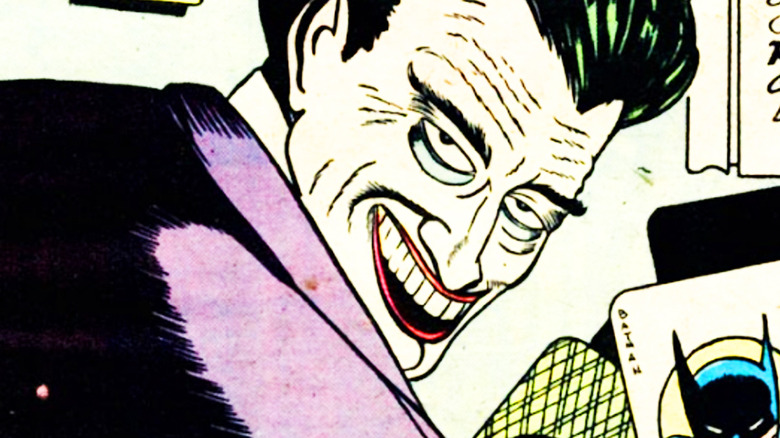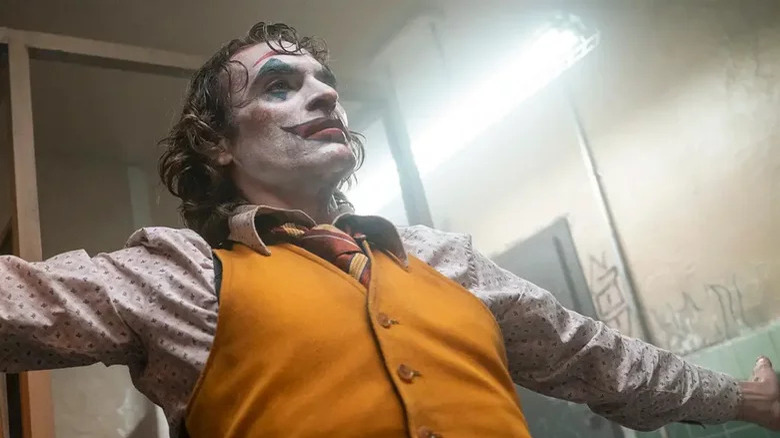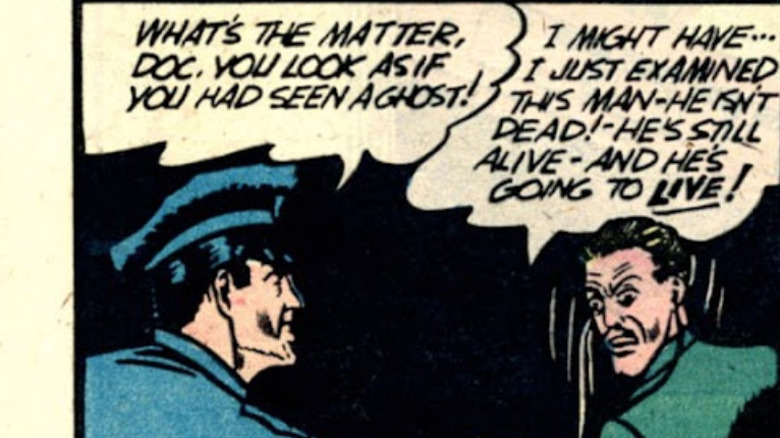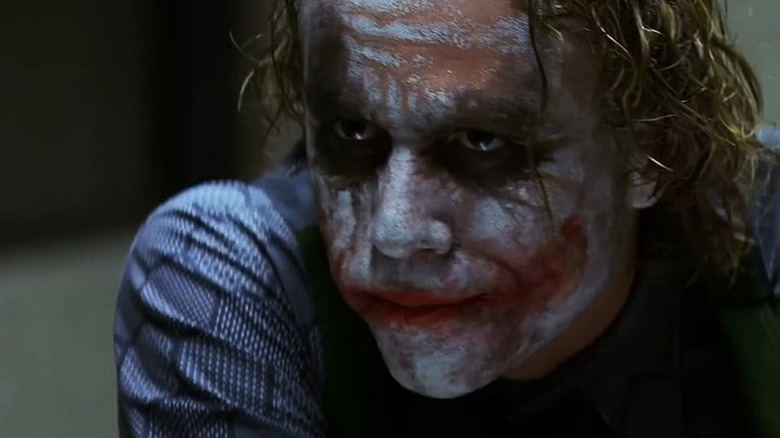The Joker Would Have Been A One-And-Done-Batman Villain Had It Not Been For One Man
The Joker has basically become as iconic as Batman himself in modern culture. These days, we're seeing just as much of The Clown Prince of Crime as we are of the Dark Knight, with "Joker 2" recently wrapping production and a fresh approach to the character from Barry Keoghan, who showed up in a scene from Matt Reeves' "The Batman" and could likely return in "The Batman: Part II."
Since Jack Nicholson's Jack Napier transformed into the iconic Batman villain in Tim Burton's "Batman" back in 1989, there have been several cinematic versions of The Joker, helping propel the character further into the public consciousness and raising his profile as an enduring pop culture figure. Of course, The Joker's history stretches much further back than the late-'80s. The infamous rogue has been a mainstay in the comics for more than 80 years, where he's been the focus of countless classic storylines and been reinvented just as much as the Dark Knight himself.
Created by Bill Finger, Bob Kane, and Jerry Robinson for "Batman" #1 in April, 1940, The Joker was introduced as a murderous master criminal, who debuted with what would become some of his now well-established calling cards, including using the news media to threaten the masses and a fatal poison gas that left victims with a rictus grin. But such trademarks might well have never become trademarks at all. In fact, The Joker was close to being a one-and-done villain of the week.
Batman's arch nemesis
Throughout the illustrious history of Joker comics, the character's origins have remained somewhat of a mystery. Various writers and artists have provided their take on how the Clown Prince of Crime came to be, but there's still no 100% official origin story for Batman's greatest foe.
Joker's literal origin, however, is slightly more well-defined, though not entirely free of confusion. Bill Finger, Bob Kane, and Jerry Robinson collaborated on the character, drawing inspiration from Conrad Veidt's Gwynplaine in 1928's "The Man Who Laughs." But the details of who had more input remain murky. What became immediately clear following The Joker's debut in 1940, however, was that the trio had created a villain worthy of more than a single-issue appearance.
In a 1984 interview (via Ain't It Cool) Robinson recalled how he'd always intended to give Batman a worthy adversary, saying:
"I felt that Batman needed a supreme arch-villain to test him...Batman didn't need another crime lord like Al Capone. I felt he needed something more exotic...the strip needed an antagonist that would be more enduring; a continuing conflict in the literary tradition of Holmes and Moriarty or King Arthur and Mordred."
But in a 2008 interview with NPR, comic book writer Steve Englehart recalled how the initial plan was to have the Joker killed off at the end of "Batman" #1. As he explained, "They added a panel at the end of the story where, in the ambulance, the doctor goes, 'Well I'm amazed this guy's actually going to live!'"
'He's going to live!'
As an article from GamesRadar explained, DC editor Whitney Ellsworth was the one who stepped in to save The Joker from his swift demise. In 1940, when "Batman" #1 debuted, Ellsworth was editorial director at DC Comics, and had the foresight to ensure the "grim jester" with the "ghastly clown's grin" as he was described in the pages of the issue, stuck around for future installments.
In the issue, The Joker is initially captured by Batman and Robin after terrorizing Gotham City by publicly threatening to kill prominent members of society and following through on his nefarious plans using his noxious gas. In the second half of the story, Joker escapes from police custody and resumes his crime spree, only to be once again confronted by Batman. In the final showdown between the two, Joker stumbles, stabbing himself with his own knife after the Dark Knight side-steps his attack.
The first page of this Joker story had promised "a battle of wits with swift death the only compromise." But while it seems that was the initial plan, due to Ellsworth's intervention, the "swift death" was hastily changed, with a final panel that showed a doctor examining Joker in the ambulance and declaring that the villain is "going to live." According to GamesRadar, Ellsworth's decision to keep The Joker alive "came after the art was done for the book," which is why this miraculous survival happens within one swiftly-drawn frame of the comic.
Joker's legacy
In "Batman" #1, the titular hero proclaims that he's "at last met a foe that can give me a good fight." That would prove to be a prophetic statement, as The Joker would, of course, go on to become the quintessential Batman villain, facing off against the Dark Knight across 80 years of comic book, TV, and movie storylines. Once the character made the leap to the big screen, both Heath Ledger and Joaquin Phoenix won Oscars for their respective portrayals, helping to solidify his standing as every bit an iconic figure as the Dark Knight.
On the comic book side, the definitive rogue in Batman's famous gallery has been behind numerous defining moments in the Dark Knight's history, from the murder of the second Robin, Jason Todd, to shooting and permanently injuring Barbara Gordon in Alan Moore's legendary 1988 graphic novel, "Batman: The Killing Joke."
DC Comics finally revealed Joker's real name as Jack Oswald White in "Flashpoint Beyond #5," where the villain is depicted as a failed comedian and former janitor at Wayne Casino. But this is just one of many backstories written for the character since his 1940 debut. And none of this, it seems, would have happened if it wasn't for Whitney Ellsworth and a single panel added to The Joker's first comic book appearance at the last second.



